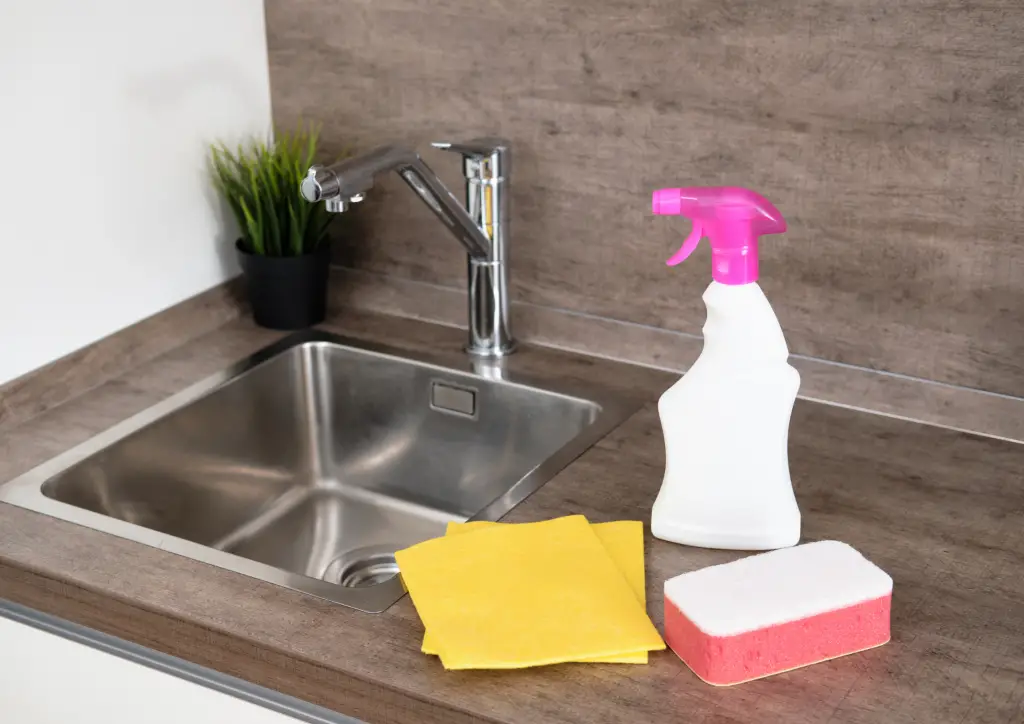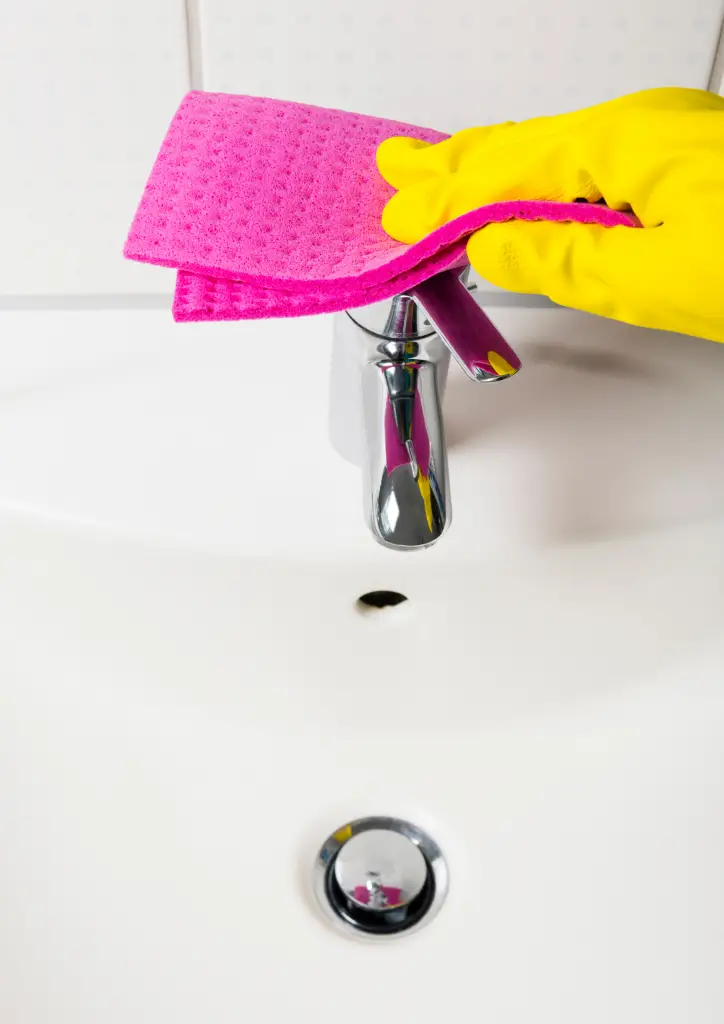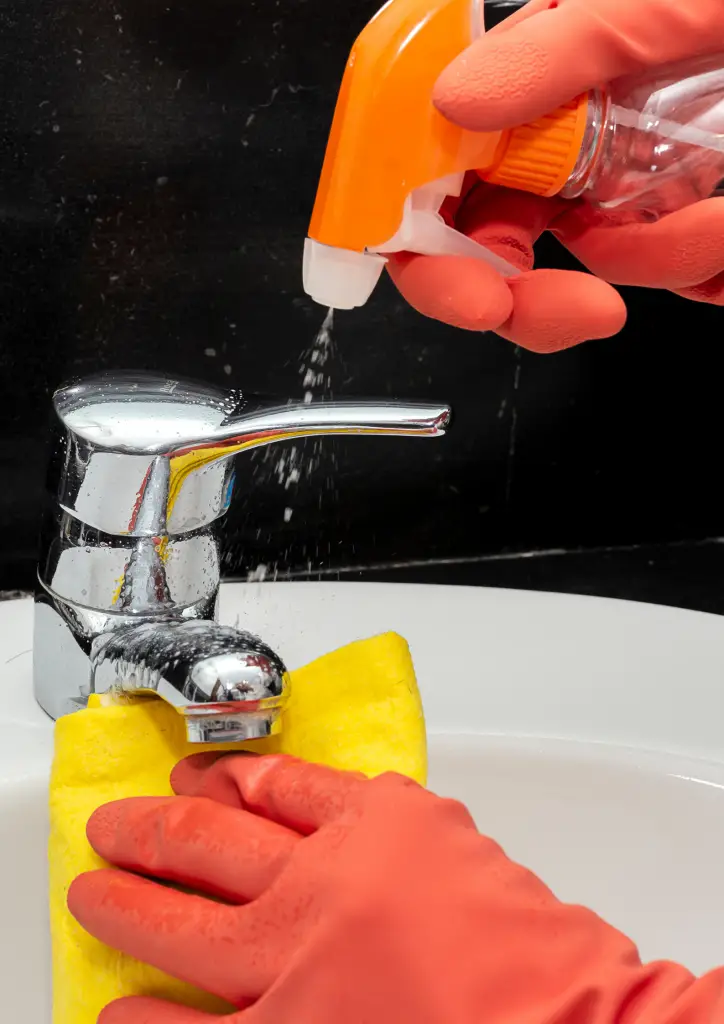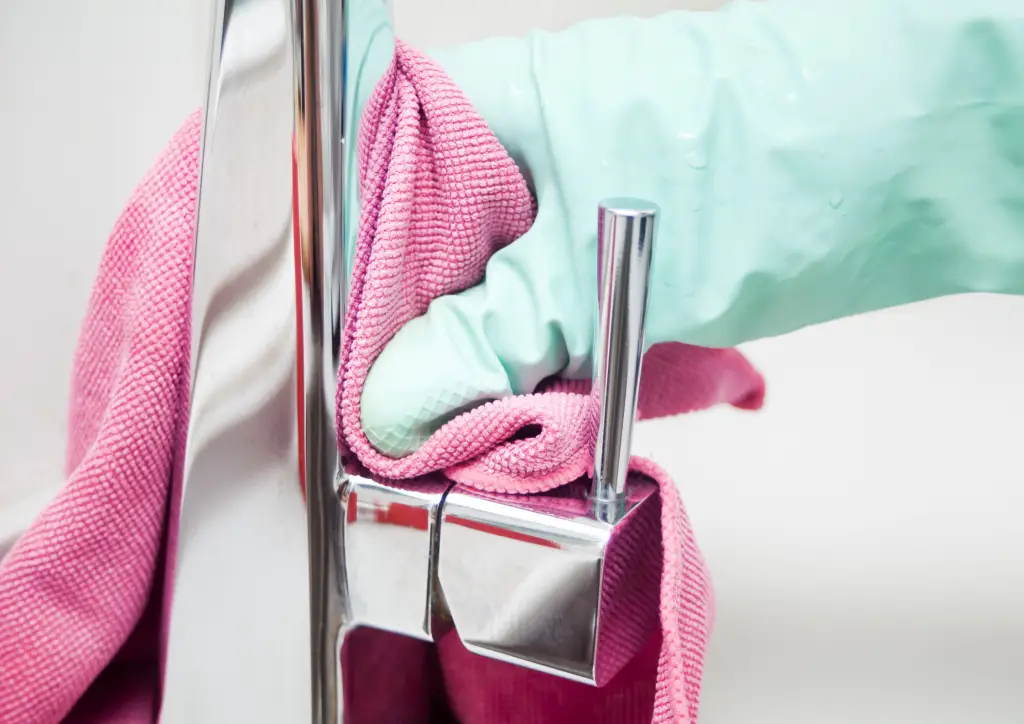One of the most used areas in your kitchen is the kitchen faucet. Bacteria and molds can quickly build up in the faucet due to its high exposure. I’ve got you covered to have clean kitchen faucets step by step.
Keeping your kitchen faucet clean is important to keep yourself and your family safe from contamination and bacterias. Here’s how to clean and care for your kitchen faucet, whether you’re dealing with germs or hard mineral deposits.
What Makes a Kitchen Faucet Dirty?

Water constantly exposes kitchen faucets to minerals and other corrosive elements. Water stains, limescale build-up, and rust can all happen as a result of this.
But, before we go into the techniques for cleaning your faucet, let’s talk about why it’s dirty in the first place. The main reason is we wipe off kitchen faucets with filthy dishcloths.
What materials do you need?

It’s helpful to know what materials you’ll need by determining the finish of your faucet. Always test your products on a small fixture section first to ensure they won’t harm the finish.
There are numerous chemical cleaners available. But, these are the basic materials you’ll need.
- Dish soap
- Water
- 1 dry cleaning cloth
- 1 wet cleaning cloth
- Vinegar
- Non-abrasive cleaner
- Baking soda
- Old toothbrush
How to Clean it?

Before you do anything, you must first determine the finish of your faucet to determine which cleaning materials are ideal for the job. You should not use scrub sponges and abrasive brushes on most finishes.
- Start with dish soap and water.
Water and mild soap can clean most faucets. Simply rub with dish soap and drying with an unused cleaning cloth is all that is required. To make the faucet shine, wipe it with a dry cloth. It may also help in the prevention of spots on the faucet finish.

- Use vinegar to remove stubborn dirt.
If your faucet has a serious grime problem or is stubbornly dirty, a mild soap won’t solve it. You’ll need white vinegar for this. Dip a cleaning cloth into a solution made up of half vinegar and half water. Test whether vinegar and water are suitable for your faucet finish in a hidden place to ensure it will not harm the finish.
- Use baking soda and a toothbrush to remove stains
Baking soda can clean practically any surface. On an old toothbrush, apply a bit of baking soda and a drop of water. To remove stains from your faucet, scrub the area surrounding it.

- Clean the edges of the faucet
Wiping the faucet’s surface is not enough to thoroughly clean your faucet. The edges of your faucet also accumulate dirt where the sink and your faucet meet. You can clean the edges with dish soap and water and an old toothbrush.
- Clean the sink’s drain area
Your drains are equally as important as your faucets. They are in charge of ensuring that the dirty water in your sink is removed. Use a non-abrasive cleanser to clean your drain. If you have any questions or are having a serious drainage issue, contact a professional.
Tips in Cleaning your Kitchen Faucet
Tip #1: For impeded water flow, use a toothbrush and a vinegar solution to scrub the inside of the filter. If that doesn’t work, try using a needle to clear individual holes.
Tip #2: Do not use abrasive sponges and brushes while cleaning your kitchen faucet. It will only damage the finish of your faucet.
Tip #3: If you have a gleam or shiny finished faucet, try polishing your faucet with a dab of baby oil.
Tip #4: If your faucet has rust, simply combine lemon juice and borax on a cloth and use it to wipe the rust away.
Tip #5: In a 1:1 ratio, combine vinegar and water. Pour it into a baggie and secure it with a rubber band on the faucet’s head. Soak the faucet head for an hour or overnight, then brush and rinse thoroughly.
People Also Ask
Will vinegar damage my faucet?
Even letting your shower head or faucets soak for more than 15 minutes can damage the finish. Vinegar is a mild acid, but it is still an acid. If you leave the vinegar on chrome surfaces for a long time, it will eat the finish right off your fixtures.
how often do I clean My kitchen faucet?
Mold, mildew, and lime buildup grow in kitchen faucets, so they should be cleaned at least once every two weeks.
Can you use bleach instead of vinegar to clean a faucet?
No. Don’t use cleaning products with ammonia, bleach, alcohol, or other harsh chemicals, and don’t use abrasives like steel wool or abrasive sponges, which can damage metal surfaces.
Summary
The kitchen faucet and sink are some of the most used areas in our kitchen. We can’t prevent bacteria and dirt from building up. So, to make cleaning your kitchen faucet easier, you must first determine the finish of your faucet to select the appropriate cleaning materials.
Mild soap and water can clean almost all faucet finishes. Do not abrasive sponges or brushes because they will only damage the surface of your faucet. It’s best to use an old toothbrush to eliminate grime.
Vinegar or baking soda can clean stubborn filth build-up from your faucet. These products have a reputation for being able to clean practically any surface. Also, remember to clean the areas where the sink and faucet meet. Simply use an old toothbrush and mild soap to brush the edges.
We all want the best for our families, and no one wants to give their children or relatives contaminated water from your filthy kitchen faucet. And knowing these tips, you can now finally say goodbye to germs!
References
https://www.thespruce.com/how-to-clean-a-sink-faucet-1900294
https://makespace.com/blog/posts/how-to-clean-kitchen-faucets/
https://www.sunrisespecialty.com/how-to-clean-kitchen-faucet


